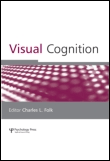
VISUAL COGNITION
Scope & Guideline
Connecting Vision and Cognition through Research
Introduction
Aims and Scopes
- Visual Attention Mechanisms:
Research on how attention is allocated in visual tasks, including studies on distractor suppression, attentional capture, and the role of working memory in visual search. - Face Processing and Recognition:
Investigations into how faces are perceived and recognized, including studies on the own-race bias, facial emotion processing, and the effects of familiarity on face recognition. - Spatial Cognition and Memory:
Explorations of how spatial information is represented and recalled, with a focus on the interplay between visual and spatial attention, memory constraints, and the effects of spatial cues. - Emotional and Social Context in Visual Processing:
Examination of how emotional expressions and social dynamics influence visual attention and perception, including the impact of anxiety on attention to emotional stimuli. - Cross-Modal Interactions:
Studies on how visual perception interacts with other sensory modalities, such as auditory and tactile inputs, and how these interactions affect cognitive processes.
Trending and Emerging
- Dynamic Visual Environments:
An increasing number of studies focus on how individuals perceive and interact with dynamic visual scenes, including virtual reality settings and real-time social interactions. - Impact of Anxiety on Visual Processing:
There is a growing interest in understanding how anxiety and other emotional states affect visual attention and perception, particularly in the context of social interactions and emotional stimuli. - Integration of Cognitive and Neural Mechanisms:
Research is increasingly integrating cognitive psychology with neuroscientific approaches, examining the neural correlates of visual attention and perception to better understand underlying mechanisms. - Cross-Cultural Perspectives in Visual Cognition:
Emerging studies are exploring how cultural differences influence visual processing and attention, particularly in the context of face recognition and social cues. - Applications of Eye-Tracking Technology:
The use of advanced eye-tracking methods is on the rise, providing deeper insights into gaze behavior and attentional dynamics in various contexts, including education and clinical settings.
Declining or Waning
- Basic Visual Features and Processing:
Research focusing primarily on the basic features of visual stimuli, such as color and shape, appears to be waning as more complex interactions and cognitive processes become the focus. - Traditional Psychophysical Methods:
The use of traditional psychophysical approaches to study visual perception has decreased, as researchers increasingly employ more nuanced methodologies such as neuroimaging or computational modeling. - Static Visual Stimuli:
There is a noticeable decline in studies that investigate static images, with a growing interest in dynamic and interactive visual environments that better represent real-world scenarios.
Similar Journals

JOURNAL OF VISION
Fostering Global Dialogue on Vision ScienceThe JOURNAL OF VISION, published by the ASSOCIATION FOR RESEARCH IN VISION AND OPHTHALMOLOGY INC, stands as a premier platform in the fields of Ophthalmology and Sensory Systems. Since its inception in 2001, this Open Access journal has worked to disseminate innovative research and groundbreaking discoveries that advance our understanding of vision science. With an impressive impact factor and ranked in the Q2 quartile for both Ophthalmology and Sensory Systems categories as of 2023, it offers a remarkable avenue for scholars and practitioners alike to share their insights and foster collaboration. Based in the United States, the journal maintains a commitment to accessibility, allowing researchers worldwide to engage with its comprehensive body of work. The JOURNAL OF VISION not only enhances the global dialogue around ocular health and sensory processing but also serves as an essential resource for professionals aiming to stay at the forefront of vision research.

JOURNAL OF COGNITIVE NEUROSCIENCE
Pioneering insights into cognitive processes.Welcome to the JOURNAL OF COGNITIVE NEUROSCIENCE, a premier publication in the field of cognitive neuroscience, published by the esteemed MIT PRESS. Since its inception in 1989, this journal has been at the forefront of advancing our understanding of the neural mechanisms underlying cognitive processes, boasting an impressive convergence period through 2024. With its Q1 ranking in the 2023 cognitive neuroscience category, it stands out among 115 peers, indicating its critical role in shaping contemporary research. The journal offers a comprehensive array of research articles, reviews, and methodologies aimed at researchers, professionals, and students alike, facilitating the exploration of complex cognitive functions. While not an open-access journal, it provides essential insights and significant contributions to the neuroscience community, making it an invaluable resource for anyone keen on delving into the intricacies of the human brain.
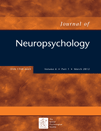
Journal of Neuropsychology
Exploring the Neural Basis of Behavior and CognitionThe Journal of Neuropsychology, published by WILEY, is a premier academic journal dedicated to advancing the field of neuropsychology and its related disciplines. With a focus on behavioral and cognitive neuroscience, this journal presents cutting-edge research that informs our understanding of psychological functions and their underlying neural mechanisms. Operating with an impressive impact factor representative of its rigorous peer-review process, the journal has established itself within the Q2 and Q3 quartiles of multiple relevant categories, including Neuropsychology and Physiological Psychology. Researchers will find the ISSN 1748-6645 and E-ISSN 1748-6653 useful for academic referencing as they explore articles that span innovative methodologies and insights into neurological conditions. Published continuously since 2007, the Journal of Neuropsychology stands as a vital resource for professionals and students alike, fostering scholarly discourse and knowledge exchange in neuropsychological research.

MEMORY & COGNITION
Connecting Research to Real-World CognitionMEMORY & COGNITION is a premier journal published by SPRINGER, dedicated to advancing the understanding of cognitive processes related to memory. Established in 1973, this esteemed journal covers a wide range of topics within the fields of experimental and cognitive psychology, neuropsychology, and physiological psychology, cementing its status as a leading voice in the arts and humanities. With an impressive impact factor and a consistent Q1 ranking across multiple categories, MEMORY & COGNITION attracts high-quality research that elucidates the intricacies of memory function and cognition. The journal is nestled within the competitive landscape of academic publishing in the United States and maintains robust accessibility options, inviting both quantitative and qualitative analyses from researchers, professionals, and students alike. By fostering interdisciplinary dialogue and collaboration, this journal plays a pivotal role in shaping the future of cognitive research, making it an invaluable resource for its readership.
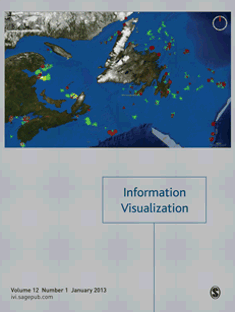
Information Visualization
Illuminating insights in the world of data.Information Visualization is a distinguished journal published by SAGE Publications Ltd, specializing in the dynamic fields of computer vision and pattern recognition. With its ISSN (1473-8716) and E-ISSN (1473-8724), the journal has been a significant contributor to academic discourse since its inception in 1997, continuing through to 2024. Based in the United States and operating under rigorous peer-review standards, Information Visualization ranks in the second quartile (Q2) of its category, reflecting its impact and relevance within the scholarly community. It holds a commendable position, ranking 39th out of 106 journals in its field as per Scopus rankings, influencing 63rd percentile discussions in research. The journal’s objective is to advance the understanding of how data can be represented and interpreted visually, fostering innovation and facilitating knowledge transfer among researchers, professionals, and students alike. By delving into novel visualization methods and their applications, Information Visualization plays a vital role in bridging the gap between data science and human cognition, making it an essential resource for anyone looking to explore the intersection of technology and visualization.
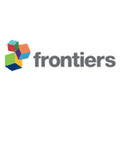
Frontiers in Human Neuroscience
Exploring the Complexities of the Human BrainFrontiers in Human Neuroscience is a premier open access journal published by FRONTIERS MEDIA SA, dedicated to advancing the understanding of the complexities of human neuroscience. With an ISSN of 1662-5161, the journal has established its prominence in various fields, achieving a Q2 ranking in categories such as Behavioral Neuroscience, Neuropsychology and Physiological Psychology, and Psychiatry and Mental Health as of 2023. Since its inception in 2008, Frontiers in Human Neuroscience has consistently contributed to the scholarly dialogue by offering a platform for innovative research that bridges the gap between neuroscience and behavioral science. The journal's rigorous peer-review process and commitment to open access ensures that findings are readily available, promoting collaboration and progress within the academic community. With an impact on neuroscience disciplines, it stands at the forefront of the field, inviting researchers, professionals, and students alike to engage with cutting-edge studies and developments. The journal's address is located in Lausanne, Switzerland, where it continues to flourish as a hub for neurobiological exploration.

Attention Perception & Psychophysics
Innovating Research in Psychophysics and AttentionAttention Perception & Psychophysics is an esteemed academic journal published by Springer, specializing in the fields of experimental and cognitive psychology, linguistics and language, as well as sensory systems. With an impressive impact factor reflected in its classification as Q2 in Experimental and Cognitive Psychology and Q1 in Linguistics and Language for 2023, the journal promotes cutting-edge research and theoretical insights into how perception, attention, and psychophysical processes shape human cognition. Its accessibility through diverse open access options ensures that pioneering research is available to a global audience, fostering collaborative advancement in the cognitive sciences. As a vital resource for researchers, professionals, and students, Attention Perception & Psychophysics serves as a significant platform for disseminating innovative findings and engaging with contemporary debates within the dynamic landscape of psychology and related disciplines.

Cognitive Processing
Advancing the frontiers of cognitive science.Cognitive Processing, published by SPRINGER HEIDELBERG in Germany, is a leading journal dedicated to advancing the understanding of cognitive processes through interdisciplinary research. With its ISSN 1612-4782 and E-ISSN 1612-4790, the journal covers a diverse range of fields including Artificial Intelligence, Cognitive Neuroscience, and Experimental and Cognitive Psychology, making it an invaluable resource for researchers and professionals alike. While it currently does not operate under an Open Access model, it is well-regarded within the academic community, holding a respectable impact factor and ranking in the Q2 and Q3 quartiles as of 2023. The journal aims to foster innovation and collaboration among scholars, presenting high-quality original research, reviews, and theoretical discussions that bridge the gap between cognitive science and its practical implications. With a convergence of research from 2005 to 2024, Cognitive Processing continues to play a critical role in the evolving landscape of cognitive science literature.

Journal of Cognitive Science
Connecting Minds: Bridging Theory and ApplicationThe Journal of Cognitive Science, with ISSN 1598-2327, is a distinguished publication from SEOUL NATL UNIV, INST COGNITIVE SCIENCE, focusing on the multidisciplinary field of cognitive science. Established in 2016, this journal aims to advance knowledge in various domains, including Artificial Intelligence, Cognitive Neuroscience, and Experimental Psychology, while also delving into Linguistics and Language. Although currently categorized in Q4 for several subjects in the 2023 rankings, it presents an invaluable platform for innovative research and scholarly discourse, providing insights that connect cognitive processes with practical applications, thus fostering cross-disciplinary collaboration. Located in South Korea, the journal adheres to rigorous academic standards, inviting submissions that contribute significantly to understanding cognition in a digital age. While it does not offer Open Access, readers can access articles through university libraries and academic databases, engaging with the latest findings and theories that shape the future of cognitive science.
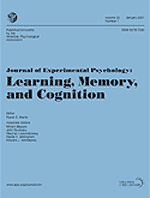
JOURNAL OF EXPERIMENTAL PSYCHOLOGY-LEARNING MEMORY AND COGNITION
Advancing the frontiers of cognitive science.JOURNAL OF EXPERIMENTAL PSYCHOLOGY-LEARNING MEMORY AND COGNITION is a premier publication of the American Psychological Association, focused on the intricate mechanisms of learning, memory, and cognition. Established in 1975, this esteemed journal has consistently delivered impactful research, evidenced by its Q1 ranking in both Experimental and Cognitive Psychology and Linguistics and Language categories for 2023. With an impressive impact factor and ranked in the top percentiles of multiple fields, it serves as a crucial resource for researchers, professionals, and students who aspire to deepen their understanding of cognitive processes. The journal’s rigorous peer-review process ensures that only the most innovative and high-quality studies are published, providing a platform for groundbreaking findings that advance the field. Though not open access, the insights within each issue are invaluable for anyone interested in the dynamics of human cognition and memory.